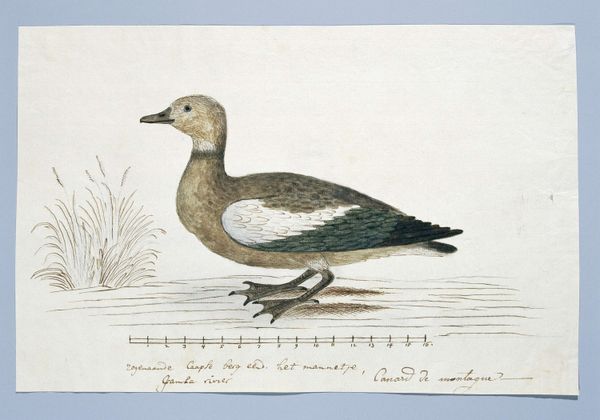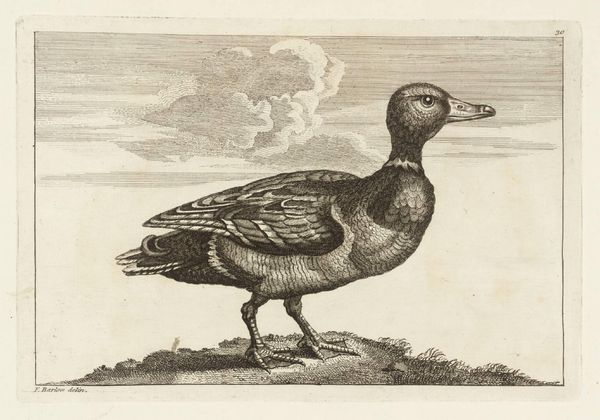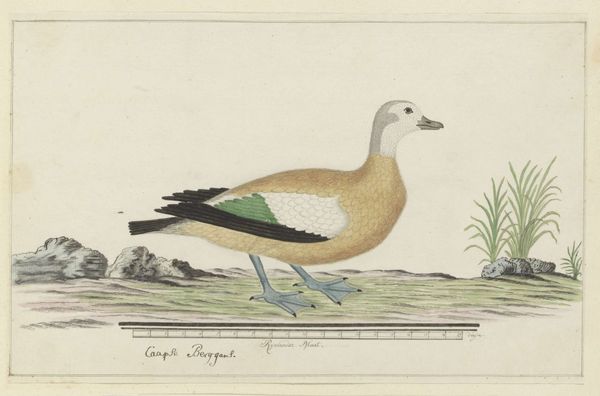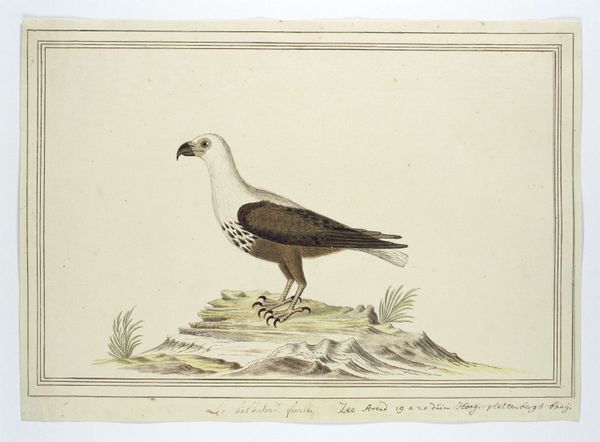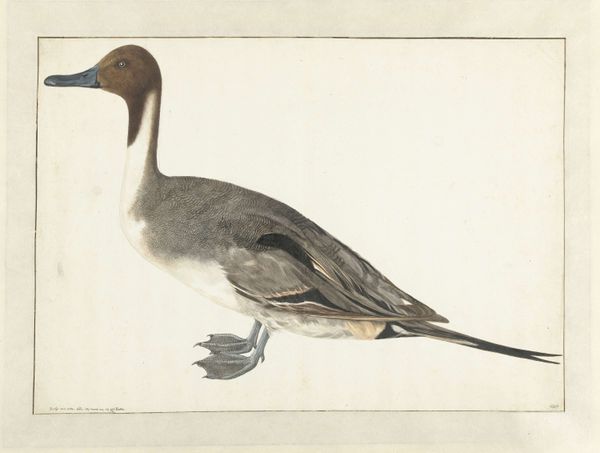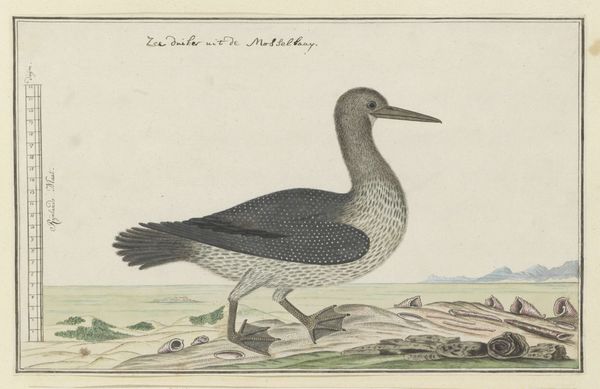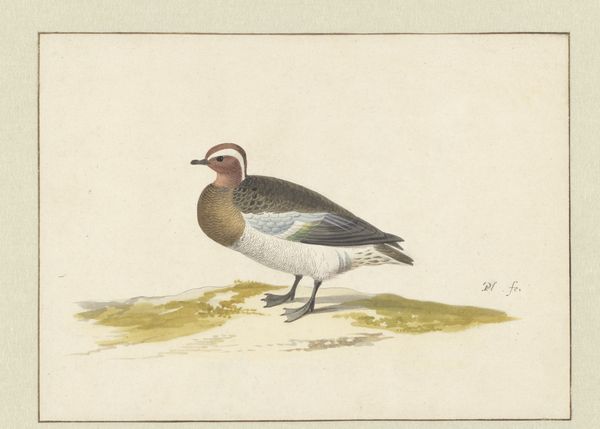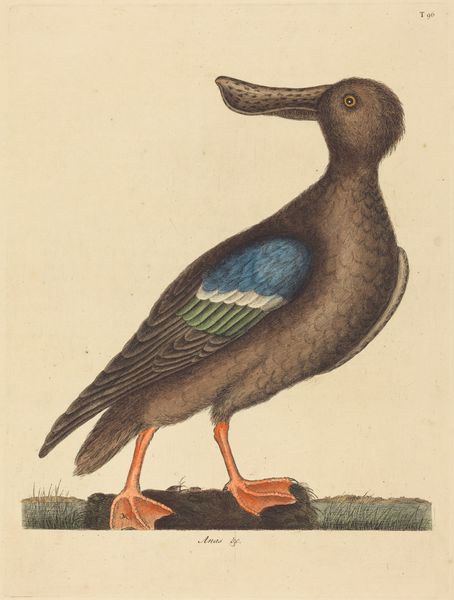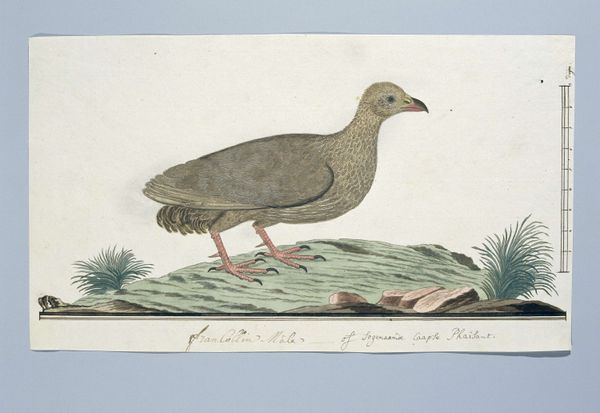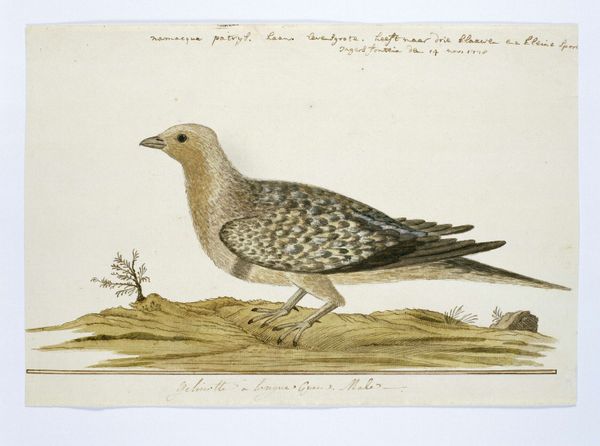
drawing, coloured-pencil, watercolor
#
drawing
#
coloured-pencil
#
landscape
#
watercolor
#
coloured pencil
#
watercolour illustration
#
naturalism
Dimensions: height 660 mm, width 480 mm, height 187 mm, width 293 mm, height 165 mm, width 293 mm
Copyright: Rijks Museum: Open Domain
Curator: This delightful work is titled "Alopochen aegyptiacus (Egyptian goose)" by Robert Jacob Gordon. It’s a colored pencil and watercolor drawing, dating probably from 1777 to 1786. Editor: My initial reaction? There's a certain serene quality, despite the scientific nature of the illustration. The soft colours and delicate linework create a calm mood. Curator: Precisely! The drawing's materiality is essential to its impact. The choice of watercolor and coloured pencil allows for the layering of translucent washes and subtle details, mimicking the soft textures of the goose's feathers. These materials were readily available and allowed for relatively quick studies in the field, emphasizing the accessibility of natural history illustration at the time. Editor: That speaks to a specific cultural impulse. The late 18th century was a period of intense colonial expansion and scientific exploration, which fueled an appetite for documenting the natural world. These drawings weren't just scientific records; they also served to introduce these "exotic" species to a European audience. Think about the politics of image-making involved. How did Gordon's patrons view these depictions, and what did they want from these types of depictions? Curator: Absolutely, there's that link between scientific endeavor, colonial administration, and cultural consumption. By portraying this Egyptian Goose against the backdrop of a South African landscape, he is capturing the natural bounty, thus creating a portrait for a European audience. Editor: Right. And where were these drawings ultimately displayed or stored? Were they meant for private collections, public display, or exclusively for scientific study? Those factors all play a role in shaping our understanding today. Also, note the text under the goose. Did that caption, or field note, add layers of contextual or scientific information for viewers at that time? Curator: Those questions reveal how much the social and institutional context influences the understanding of a piece, yes? Thinking about Gordon's process-- the quick, efficient medium of the combined watercolor and colored pencil suggest it was possibly an image quickly put down, while in the field... a testament to a moment caught in time and then circulated through these networks of knowledge production and dissemination. Editor: Indeed, it underlines that what seems a simple natural history image is, in reality, enmeshed in layers of colonial, scientific, and artistic narratives. Curator: It does indeed make one think differently about this seemingly innocent goose! Editor: Yes, seeing it not as just an artwork, but an artifact shaped by very particular forces and interests.
Comments
No comments
Be the first to comment and join the conversation on the ultimate creative platform.
